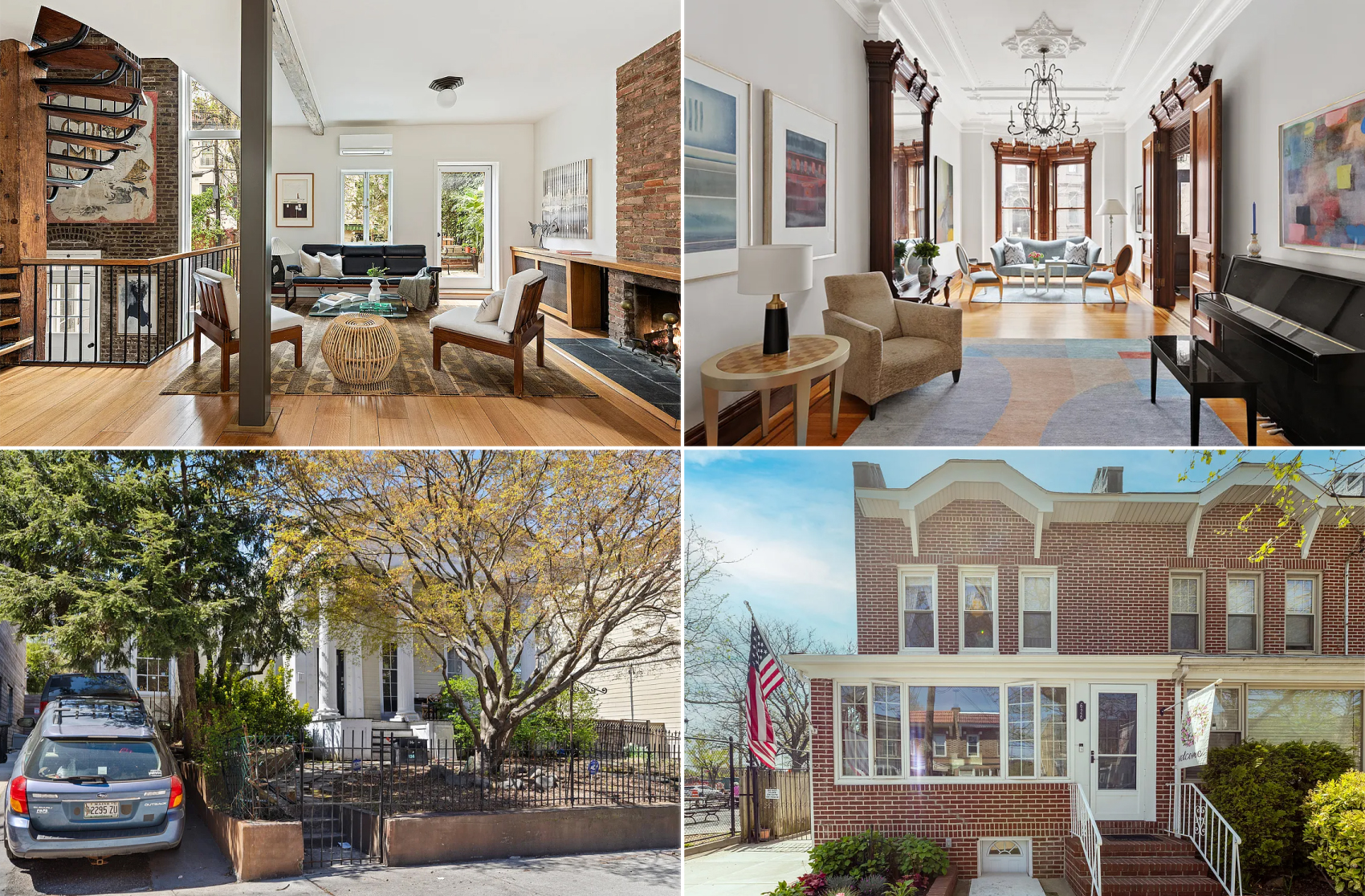Brooklyn Paper: Taxpayers Paying Up for Downtown Rental
It’s hardly breaking news, but The Brooklyn Paper has a story this week about Forest City Ratner Companies receiving $109.5 million in tax-exempt bonds and $27.5 million in taxable bonds issued by the New York State Housing Finance Agency for the 335,000-square-foot building under way at 80 DeKalb Ave. According to The Brooklyn Paper, critics…


It’s hardly breaking news, but The Brooklyn Paper has a story this week about Forest City Ratner Companies receiving $109.5 million in tax-exempt bonds and $27.5 million in taxable bonds issued by the New York State Housing Finance Agency for the 335,000-square-foot building under way at 80 DeKalb Ave. According to The Brooklyn Paper, critics say that this translates into tax payers underwriting each affordable unit to the tune of $1.5 million. Wachovia Bank and Helaba provided “credit enhancement” to the $137 million in bonds. The 34-story tower, Ratner’s first residential building in Brooklyn, was designed by Costas Kondylis. It’s an 80/20 unit with 292 market-rate rental units and 73 affordable ones, that will remain so for 99 years. The building is to be green—they expect to achieve LEED certification—and could begin leasing next summer.
Ratner’s First Tenants [The Brooklyn Paper]
New Glassy Tower to Join Fort Greene Mini-City [NY Observer]
Development Watch: 80 Dekalb Avenue [Brownstoner] GMAP P*Shark DOB
80 Dekalb Avenue: Get Ready for Take-Off [Brownstoner]
Public Hearing Scheduled for 80 Dekalb Financing [Brownstoner]
Demo Done at Site of Ratner’s Dekalb Tower [Brownstoner]
At 80 Dekalb, No Mention of Ratner [Brownstoner]
Ratner: ‘Fort Greene, I’ve Got You Surrounded’ [Brownstoner]





Yes – they make more money by taking part in the 80/20 program. The 80/20 program is optional, and it’s clearly a bigger beaurocratic headache to deal with HFA and HDC than it would be to just use a bank – so they would have to be making more money in order for it to be worth their while. The primary thing that allows them to make more money is that, by taking part in the 80/20 program the project becomes eligible for 421a tax exemption. This exempts them from having to pay real estate taxes for about 15 years. THat’s a significant reduction in operating expenses for a rental project.
Thank you both for the explanations. I appreciate that you explained everything without making us less than financial wizards feel completely incompetent.
I finally understand what it all means (at least I’m beginning to) so I’d like to ask one further question, which goes back to what bxgrl was seemingly asking- Do developers make more money overall with this deal? Realizing that they aren’t losing money, do they actually make more money than if they didn’t build affordable housing at all? How much more does Ratner stand to make by adding affordable housing?
Thanks.
OK lurker – here’s an attempt to explain this in english (to thoseof you who actually know how this work – I know that I’m really oversimplifying this):
Let’s say a developer has determined that it would cost $1 million to build his building. He would be required to put up some of that money (nowadays it would be at least 35%) in equity and the rest would be debt – which means he would go to a bank and take out a loan. Let’s say his project will take one year to build. He would be taking out a loan for $650,000 for one year before he could sell off his units and pay off that loan. A bank would charge him interest of around 8% – so it would cost him $52,000 to pay off the interest for that loan. If the developer participates in the 80/20 program, then rather than go to the bank, either HFA or HDC basically replaces the bank and they provide the developer with the $650,000. But they only charge interest of like 5.5% – so it only costs the developer $35,750. How is the HFA or HDC able to charge less interest? Well the they are raising that $650k by selling bonds. The people who buy those bonds are earning 5.5% interest – so that’s why HFA is charging the developer that amount. Now normally, the people who buy those bonds would have to pay taxes on the money earned from those bonds – so the net amount they made would be less than 5.5%. (or more likely – the HFA would have to offer them 8% interest in order to entice people to buy them). But these are tax free bonds – so the buyers of the bonds don’t have to pay taxes, which means that the HFA can pay less interest, which means the developer can pay less interest. The exact amount of subsidy depends on which tax bracket the bond buyers in – presumably they are in the highest tax bracket which would mean that taxes are around 35%. So anyway, multiply all these numbers by the fact that a project of this size costs somewhere in the ballpark of $300 million (not $1 million) and that the life of the loan will most likely be for 30 years, not 1 year and you start to see how this adds up to real cost savings for a developer which starts to make up for all of the revenue he is losing because he can only charge a fraction of the market rent on 20% of his units.
let’s see if we can make this simpler. the blanket statement that the taxpayers are footing the bill to FCR is a bit misleading. if FCR built this project with a conventional construction and permanent loan the interest rate would be say 7%. ( i know they’re not that high but bear with me). in this scenario FCR wouldn’t provide 20% low-income units because it wouldn’t make sense for them nor would it be required.
now if they build it with 80/20 tax exempt bonds, the interest rate on the bonds is something like 4% (for argument’s sake again). yet the requirement is to provide 20% low-income units. the incentive here for FCR is the spread on the interest rates. despite the loss of rental income on the low-income units relative to the market units, the savings on the interest (bonds vs conventional) on an annual basis makes it a better deal from a net cash flow perspective (i.e FCR walks away with more dough).
now to the taxpayer’s. like was stated previously these are govt bonds which are issued by the state. the folks who purchase these bonds are exempt from paying income taxes on the interest earned. so yes this is foregone revenue by the govt that you could argue is lost. but that assumes that you see the collection of taxes as kind of zero sum game. but my main point is that the notion that dollars that come out of our paychecks are going directly to FCR for this project and others like it is incorrect. you need carrots like the interest savings in order to compel companies like FCR to build the low-income housing. otherwise they just wouldn’t.
Would be more refreshing to see some of these posts in plain english so those of us without degrees in finance could follow along a little better. Someone earlier asked about the reality of tax subsidies (at 10:38). Maybe someone could actually explain that in a clear and non-insulting way? (We aren’t stupid- it’s just not our field of expertise).
So refreshing to finally see a strong dose of revolt against the incessant anti-ratner BS propaganda on this blog.
As altervoce implied, the subsidy involved here is forgone taxes. Normally the bond interest would be taxable income for whoever owns the bonds, but because the state used its tax-exempt power, the bondholders do not have to pay tax on the interest they earn. By my calculations, at a 6% rate of interest (fairly generous I believe), assuming every bond purchaser is among the richest people and is paying the top NYC/NY income tax rate of 12.14% (excluding federal taxes), the city and state would be subsidizing the building in forgone taxes to the tune of $997,908.00 a year during the duration of the bond. The lower the income the purchasers of the bond however, the lower the subsidy goes since they will have a lower tax rate and shield less income in municipal bonds.
FWIW, we think this project is great for Brooklyn–and have been providing play-by-play coverage of the construction process. We only played up that $1.5 million number because it was the only new angle in the entire Brooklyn Paper article. Everything else has been known for months.
I think someone needs to write a nice long piece describing the various forms of development programs offered by the HFA and HDC.
If Brownstoner is going to repeatedly have articles about this, it makes sense there be a resource created so people understand what is going on.
That said however, the term sheets for these programs is very well detailed on the HDC and HFA websites. The poster above that describes the maximum income and associated rent levels is particularly clueless – it takes 10 minutes to look up this data.